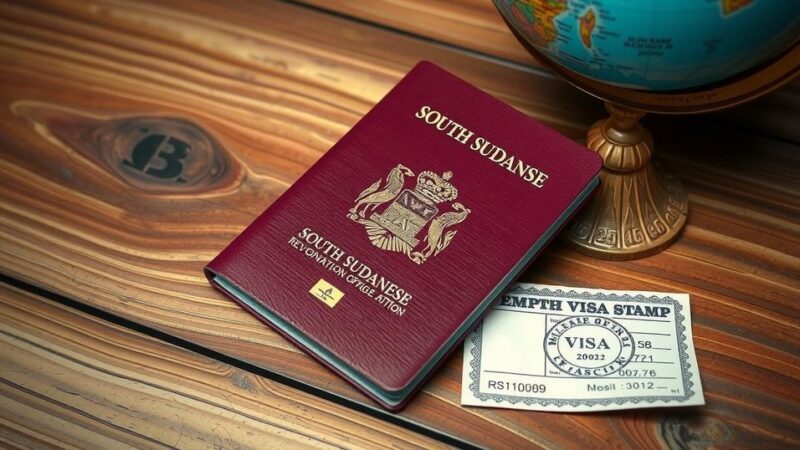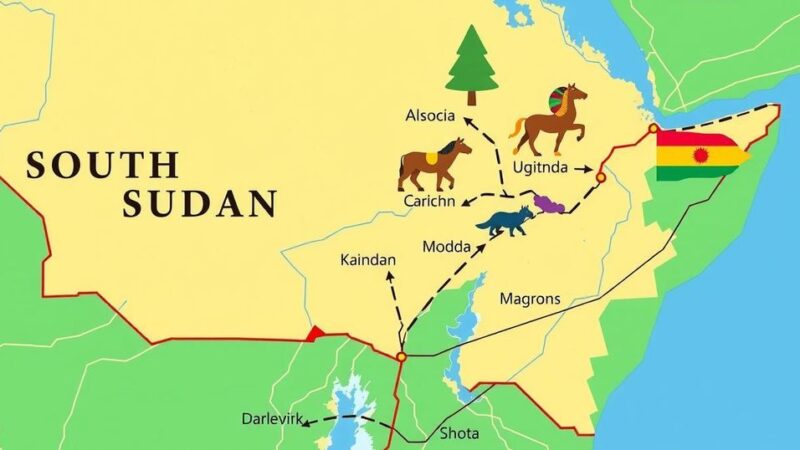Lebanon and Syria have agreed to a ceasefire following two days of border clashes that resulted in multiple casualties. The agreement focuses on improved cooperation between the two nations. Tensions were fueled by accusations against Hezbollah, and the conflict marks the most severe border violence since the ouster of Assad. Continued military activities and international support are on the agenda as both countries address escalating tensions along their border.
On late Monday, Lebanese and Syrian defense officials reached a ceasefire agreement following two days of violent clashes along their border, as reported by Syria’s state-run SANA news agency. This accord aims to enhance cooperation and coordination between the two nations. The violence had escalated after the Lebanese president ordered retaliation against Syrian fire, resulting in seven fatalities and over 50 injuries in Lebanon, including a young girl.
The confrontations stemmed from accusations made by Syria’s interim government against Lebanon’s Hezbollah, alleging that militants crossed into Syrian territory on Saturday, leading to the abduction and murder of three soldiers. Hezbollah has denied these claims, and some reports suggest local border clans may have been involved. This incident marks the most serious border conflict since the fall of former Syrian President Bashar Assad.
Syria’s military purportedly targeted Hezbollah positions in response to these allegations. Meanwhile, Lebanon’s Information Minister stated that the deceased were smugglers rather than military personnel. Reports indicate that five Syrian soldiers also lost their lives, with escalating tensions prompting families to flee towards the Lebanese town of Hermel.
Lebanon’s President Joseph Aoun expressed dissatisfaction with the current situation, issuing orders to the military for retaliatory measures against gunfire sources. He has also instructed the foreign minister to engage with Syrian officials to de-escalate tensions. Recent violence primarily involves clashes between the Syrian military and Lebanese Shiite clans allied with the regime of the former president.
As casualties rose, communications between the Lebanese and Syrian armies were reestablished to address these tensions. Concurrently, low-level fighting continued, with some attacks on Syrian military vehicles reported. An attack on a position housing Syrian journalists also resulted in injuries, deepening the conflict’s complexities. Senior Hezbollah officials have accused Syrian fighters of crossing into Lebanon and launching attacks.
Additionally, Lebanon is seeking international aid to strengthen its military presence along borders with Syria and Israel. Amid these developments, a U.N. envoy highlighted the potential for serious repercussions resulting from the enduring presence of Israeli forces in Lebanon and ongoing strikes in Syria targeting military sites attributed to the former regime.
Recent Israeli military strikes in southern Syria have reportedly killed and injured civilians, prompting renewed concerns regarding regional stability.
In conclusion, the ceasefire agreement between Lebanon and Syria aims to halt the recent clashes and establish better coordination between the two nations. The violence has resulted in multiple casualties on both sides, stemming from tensions involving Hezbollah and local clans. The situation remains delicate, with heightened military presence and ongoing communications in efforts to prevent further escalation. International support is also being sought by Lebanon to bolster its defenses amid these regional conflicts.
Original Source: www.thecanadianpressnews.ca






